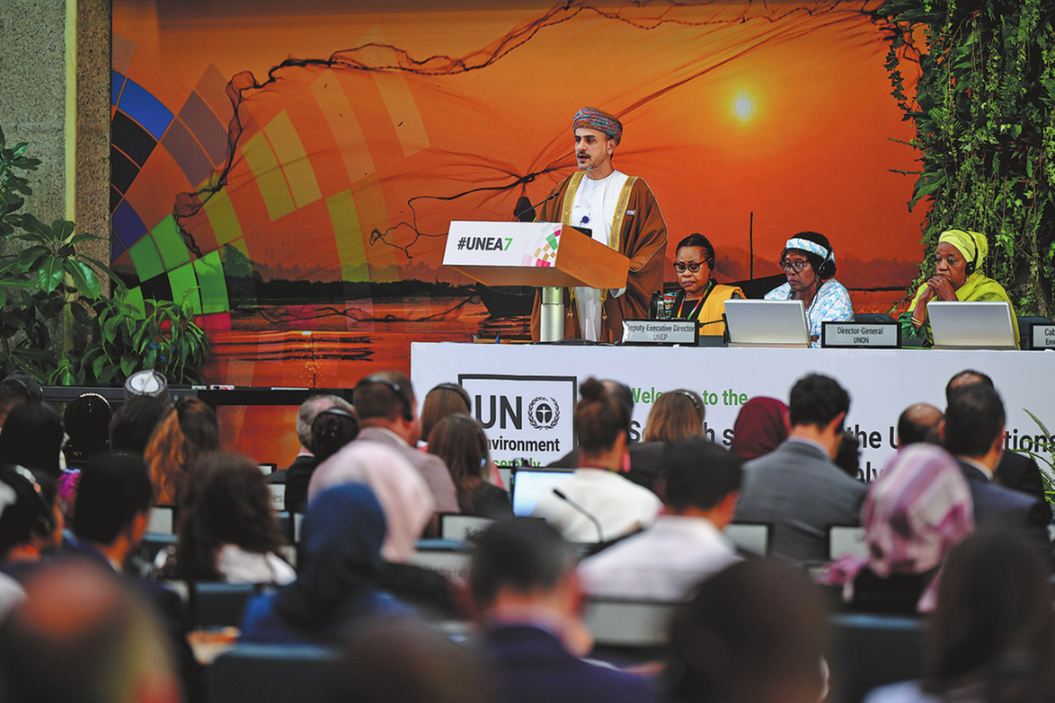Different strategy


China's unique and flexible approach to boost Africa's industrialization is more effective than those employed by Western nations
In the 21st century, Africa has developed a few ambitious plans, such as the New Partnership for Africa's Development (2001), the Action Plan for Accelerating Industrial Development in Africa (2007) and the Agenda 2063 (2015), etc., with the intention of promoting a new wave of industrialization. However, the effects of all these strategies have been lackluster so far. Although over the past two decades the absolute output of Africa's manufacturing sector has maintained growth in most years, the growth is slow, especially in comparison with other regions such as the Asia-Pacific.
The biggest challenge to Africa's industrialization is the lack of systemic coordination. In today's manufacturing sector, the depth and breadth of cooperation is unprecedented. The intertwined cooperation of modern industry requires that every stakeholder complete its task timely. The absence or delay of any department, individual or even a machine component may cause the entire manufacturing system to stall. In addition, the huge flow of commodities and labor put a high demand on infrastructure and integrated management capacity. Therefore, the development of modern industry cannot rely on individual enterprises or sectors alone, but is a comprehensive test of countries' production and circulation capacity.
Africa has long been the source of raw material supply for other industrialized regions, and most African countries do not have a complete industrial sector. Existing factories have to import a large number of machinery and parts from abroad. Local power and water supply is often deficient and cannot meet the needs of large-scale production. Poor transport infrastructure, inefficient administration and complex geopolitics hinder the logistics within Africa and beyond. The technical level of workers and the management capability of executives are unsatisfactory and these factors constrain the professional specialization and collaboration at multiple levels. Over time, the gap between Africa's industrial sector and that in other parts of the world is widening.
Addressing the main obstacles in Africa's industrial system and logistics connectivity, China has three targeted measures to promote industrial cooperation with Africa. In order to ensure fast and smooth mass production under current conditions in Africa, Chinese enterprises have invested to build a number of industrial parks across the continent, which facilitate vertical cooperation between upstream and downstream enterprises along the value chain as well as provide basic facilities to help manufacturers of similar products to gather horizontally. For example, China Nonferrous Metal Mining Co has set up the China-Zambia Economic and Trade Cooperation Zone in the Chambishi region to process primary products mined there. Most of the investors in the zone are subsidiaries of CNMC, covering the production chain of mining, smelting and processing of copper, cobalt and other minerals. There are also several private Chinese enterprises and local firms providing equipment maintenance and logistic services.
The second feature is to link infrastructure construction with industrial investment. Building infrastructure in Africa usually needs enormous funding, but the underdeveloped economy makes it difficult to recover the investment and even to maintain the facilities. In view of this, China and African countries jointly plan industrial projects together with infrastructure construction to ameliorate the utility and profitability of infrastructure. Taking the Addis Ababa-Djibouti railway as an example, the Chinese government guided enterprises to set up a handful of industrial parks to form an industrial belt along the railway, and form a benign interaction between large-scale infrastructure and industrial development. China Merchants Group participated in the port expansion project in Djibouti as well, aiming to significantly elevate the port's throughput capacity to cope with the increasing freight volume of the new railway.
Third, a large part of Chinese enterprises in Africa manufacture products tailored for the local market, so that they can be better integrated into the local level of development and generate indigenous industrialization momentum. Although some economists predicted that because of its cheaper labor costs, Africa would receive labor-intensive manufacturing investments from Asia and drive industrialization through export processing, this has not been realized in practice. In the absence of supporting suppliers and service providers, when African factories receive export orders, the manufacturers are hardly able to guarantee quality and timely delivery.
Almost all the raw materials, accessories, spare parts and many other materials must be imported, which in turn face perennial problems such as administrative delays, congestion of transportation facilities, poor logistics, and unstable exchange rates in Africa. By contrast, most of the Chinese manufacturers that can operate for an extended period in Africa take the local markets in Africa as the main sales destination, and their production, supply, distribution channels and customers are all based in Africa.
The local market-oriented manufacturing is not a revival of the "import substitution" policy of the past, but rather a market behavior characterized by discovering the overlooked demands of African consumers and specializing in niche markets. Due to the small size and remote distance of African markets, multinational companies pay little attention to the special needs of African customers. The products imported to Africa are often expensive and out of date.
Thanks to their close bilateral economic ties, Chinese enterprises have observed the growth of the African markets. They have started producing in Africa, primarily in the sectors of building materials, furniture, plastic products, food, medicine, apparel, shoes and other consumer products. The local manufacturing not only significantly saves transportation costs, but also designs products to meet the demands of African customers. Therefore, instead of simply replacing imported products, these Made-in-Africa products rather fill the market vacuum and invigorate the market.
The West usually has a condescending attitude toward Africa when it comes to industrialization. As former colonial powers or donors, European and North American industrialized countries always use their own political-economic systems as the criteria to criticize Africa's backwardness, and coerce African countries to imitate the Western models.
China has found a successful path of industrialization through its own exploration and consequently has a different understanding from that of the West about the industrialization process, which involves complex dynamism and comprehensive socioeconomic transformation. China has an open and pragmatic attitude regarding how to achieve industrial transformation in diverse national environments, and encourages African partners to explore their paths independently, insisting that each country should follow its own development path. Such an attitude provides the Chinese approaches with unique effectiveness and flexibility in Africa.
The author is the chair of the Department of International Relations at Tsinghua University. The author contributed this article to China Watch, a think tank powered by China Daily. The views do not necessarily reflect those of China Daily.
Contact the editor at editor@chinawatch.cn.

































